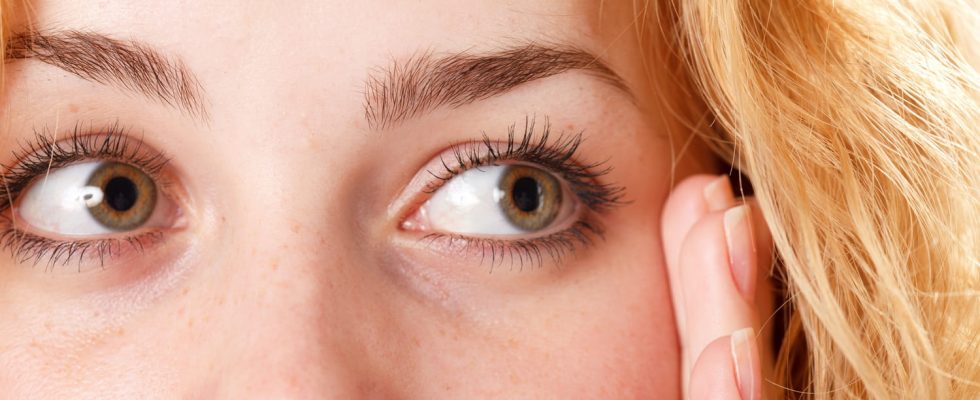In your eyes or near your eyelids, you can spot these abnormalities suggestive of excess cholesterol.
Approximately one in 5 adults has too much bad cholesterol (LDL) according to Public health France. A rate of cholesterol high (hypercholesterolemia) can be explained by a genetic predisposition, a sedentary lifestyle, being overweight, an unbalanced diet… Be careful because you have too much cholesterol greatly increases cardiovascular risk and can lead in the long term to heart attack of the myocardium, a Stroke or arteritis of the lower limbs, hence the importance of monitoring the symptoms alert.
Have you seen the eyes of the Mona Lisa?
Among them – and we don’t always know it – some can be identified in or next to the eyes. For example :
► Small, slightly raised yellowish patches on the eyelids (see photo on the right) called xanthelasmas. They occur when bad cholesterol is in excess and is deposited at the level of the eyelids or at the level of internal corner of the eye. “This can be a sign of hypercholesterolemia, particularly of the familial form, a disease of genetic origin responsible for a significant increase in “bad cholesterol” in the blood“, explained Lionel Ribes, President of the National Association of Familial Hypercholesterolemia and Lipoproteins, during a conference on familial hypercholesterolemia. For the record, these xanthelasmas are visible on the famous painting The Mona Lisa of Leonardo DeVinci, who would then be the first woman represented in Art suffering from hypercholesterolemia.
► Gray-whitish arcs around the iris called corneal arches. They occur when excess bad cholesterol is deposited at the level of the cornea. They do not impair vision. “They are common in the elderly and do not necessarily indicate excess cholesterol, but when they are detected before age 45corneal arcs should suggest hypercholesterolemia“, continues the doctor.
If you notice any of these eye symptoms, contact your doctor. treating physician or endocrinologist. In general and especially after 50 years, it is advisable to check your cholesterol level regularly by a lipid profile: every 5 years if you are healthy, every 3 years if you are at risk.
- Website of the National Association of Familial Hypercholesterolemia and Lipoproteins
- Conference on Familial Hypercholesterolemia – October 2022
- Study: Little diagnosed, insufficiently treated familial hypercholesterolemia. Survey of 495 doctors. – La Presse Médicale, September 2018
